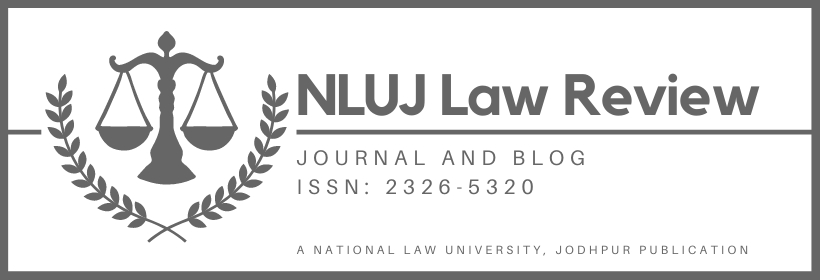The Draft Competition (Amendment) Bill, 2020 (“the Bill”) has been widely discussed since the day it was introduced. There are various proposed changes in the Bill, the major one being the inclusion of Section 4A in The Competition Act, 2002 (“the Act”), which grants a defense of ‘Intellectual Property Rights’ (“IPR”) in cases related to ‘abuse of dominance’. Further, the Competition Law Review Committee (“CLRC”) in its report has recommended the use of ‘rule of reason’ approach in determining cases of abuse of dominance.
The aim of intellectual property (“IP”) law as well as competition law remains to be “consumer interest” by providing wider choices at affordable prices through rewarding creativity and controlling anti-competitive conduct. However, in order to achieve this aim, IP law and competition law seem to have different approaches. For e.g. on one hand, IPR provides a holder with exclusive usage rights and on the other hand, competition law restricts monopoly. This conflict is apparent in the present legislation. The blog examines the capability of Section 4A in balancing this conflict and explores the use of the “rule of reason” approach to lay down a uniform policy to deal with such matters.
Abuse of Dominant Position and IPR
‘Dominant position’ is the strength of an enterprise to operate independently of competitive forces or affect its competitors or consumers in its favor.[i] It is the strength of an enterprise to take decisions unilaterally independent of various outside factors. Dominant position in the relevant market per se is not prohibited, but the abuse of this position is prohibited under Section 4 of the Act.[ii]
In many cases, dominant players in the relevant market who hold IPR such as companies like Microsoft, Intel and Monsanto were alleged for abusing their position in the relevant market. This shows the inherent conflict of IP laws with abuse of dominant position. Therefore, it becomes imperative to provide a law for similar situations, where assessment of abuse is to be examined along with giving IPR its due importance. This is one of the reasons why the CCI has kept its jurisdiction over IPR related competition matters. It has dealt with a wide array of cases from indulging in anti–competitive agreements by forming cartels in the film industry to monopolizing the manufacturing of spare auto parts in the automobile industry. In a series of judgments, it has been established that competition authorities in India have jurisdiction dealing with the matters of IPR and it would be limited to whether the firm has abused its dominant position.
Section 4A and its interpretation
The Bill seeks to remove Section 3(5) of the Act and insert Section 4A instead. Section 4A extends the right of reasonable exercise of an IPR [which is already available in case of Anti-Competitive Agreements under Section 3(5)] to abuse of dominance as well.
Even though this amendment provides an advantage to IPR holders who are dominant in the relevant market, the term “reasonable conditions” is of great importance to keep a hold on the actions of enterprises exploiting IPR. But, how and to what extent this reasonability should be applied is of major significance. To tackle this, the CLRC has recommended that Section 4A should be interpreted in a narrow sense in line of international jurisprudence.
In the Magill case, the three television companies refused to grant permission to Magill TV Guide Ltd. to publish a comprehensive weekly television guide stating copyright issues. The Court of Justice of the European Union (“ECJ”), applied the exceptional circumstances doctrine and allowed Magill TV Guide Ltd. to publish the guide. This doctrine implies that when an IPR holder has access to such a facility which is so essential that without it, no business can operate in the relevant market, then that IPR holder has to compulsorily license that IPR to other competitors. This doctrine was applied considering four major factors which includes: [A] non-availability of a substitute product (i.e. a guide in this case) having potential consumer demand; [B] new product creation was hindered by the refusal of supply of information; [C] No objective justification for such refusal; and [D] taking advantage in the secondary market by excluding competition in another market. Further, in the IMS Health case, IMS refused to grant a license of the copyrighted “1860 brick structure”, which had become an industry standard by then, and brought an action against NDC for infringing its copyright. The Court reaffirmed the case of Magill and ordered IMS to compulsorily license the structure to its other competitors.
Notably, the Microsoft case is one of the controversial cases in this matter which broadened the scope of this doctrine by stating that the four circumstances mentioned in the Magill and IMS Health cases are not exhaustive and other circumstances depending on the facts of the case can also be considered under this doctrine. This led to more focus on antitrust policy compared to IPR; it resulted in broader interpretation of Magill case which led to unreasonably curbing the freedom of choice of dominant enterprises to deal and also hindered the rights provided by IP law leading to disincentivizing innovation.
When we look at Section 4A, chances are that the above mentioned cases will be relied upon by CCI while interpreting it. However, applying this doctrine with a non-exhaustive list of circumstances as mentioned in the Microsoft case might affect the rights of IP holders unreasonably. Therefore, the narrow application of this doctrine is important for not compromising the rights of IP holders as well as to aim towards healthy competition.
Adequacy of Assessment tools of CCI
It can be argued that this proposed section does not provide adequate assessing tools to CCI to analyze abuse of dominance in cases of IPR as no subsequent amendment has been made to Section 19 of the Act. Section 19(3) and Section 19(4) empower the CCI to consider certain factors while ascertaining anti-competitive agreements and abuse of dominance, respectively. However, Section 19(4)(m) empowers the Commission to ponder ‘any other factor’ which causes abuse of dominant position. This will help the CCI to investigate cases falling under Sec 4A with the help of rule of reason approach.
Generally, there are two approaches for deciding whether an act by an enterprise is anti-competitive or not: per se rule and rule of reason. The per se rule presumes from the beginning that certain specified acts are anti-competitive irrespective of their effect. On the other hand, the rule of reason approach requires a regulator to engage in evaluation of evidence bearing on actual or predictable competitive effects. In order to remove ambiguity in the approach of CCI, the CLRC has recommended the use of the rule of reason for all the cases under Section 4.
For example, Standard Essential Patents (“SEP”) require the patent holder to observe fair, reasonable, and non-discriminatory (also referred to as “FRAND”) commitments which will balance the right of patentee and the licensee. The courts in India have adopted a moderate approach while dealing with them until now and denied monopolistic activity in the name of IPR. The argument that SEPs are dominant may be strong but not necessarily borne out by evidence. An ‘effects-based’ approach provides for investigation to define the markets appropriately and in doing so be able to identify competitive constraints.
Thus, a holistic reading of Sections 4, 4A and 19 of the Act applied with the use of rule of reason will empower the CCI to investigate such cases and at the same time to not directly presume an act of an IPR holder to be anti-competitive, but to first examine its effects. This provides an advantage to the dominant enterprise for justification of their acts before the acts performed by it are considered anti-competitive.
Conclusion
The introduction of Section 4A will lead towards a much required certainty and uniformity with respect to the defense under Section 4 for CCI as well as dominant enterprises. However, the use of this section recklessly by dominant firms to avoid any repercussion of their actions cannot be denied. Considering the imbalance that the interaction of IP law and competition law has created, Section 4A is a step towards mitigating this imbalance and therefore is desirable. A harmonious reading of above sections and a narrow interpretation as mentioned in cases of Magill and IMS health with the use of rule of reason has the capability of establishing a desired balance between the two laws. When it comes to the adequate assessment tools for CCI, the right approach and the residue clause have enough scope for CCI to assess the acts of enterprises.
[i] The Competition Act, 2002, § 4.
[ii] Shri Neeraj Malhotra, Advocates v. North Delhi Power Ltd, CCI- Case no. 06/2009.
This article has been authored by Priyal Jain and Indra Kumar Lahoti, students at Hidayatullah National Law University Raipur, Chhattisgarh.



